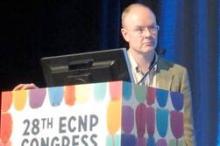Although all patients had baseline deficits across the cognitive domains, Dr. Sienaert’s study did not find any additional declines in cognition following ECT in either arm. Because the entire study group overall remained cognitively impaired, Dr. Sienaert theorized the sample was either previously cognitively scarred, putting them at risk for depression, or that the inverse was true: their depression left them vulnerable to cognitive deficits.
Taken with the results of a second study by Dr. Sienaert, there doesn’t seem to be any notable cognitive advantage to ultrabrief pulse ECT.
In the second study, a randomized, controlled comparison of right unilateral ultrabrief pulse ECT with right unilateral standard pulse ECT in 116 patients, standard pulse ECT performed significantly better than did ultrabrief pulse ECT, and had similar relapse rates at 3 and 6 months. Most of the patients in the study were women in their early 60s who were taking medication for their depression (J Affect Disord. 2015 Sep 15;184:137-44. doi: 10.1016/j.jad.2015.05.22).
Remission rates in both those who dropped out (58%) of the standard group and those who completed the standard ECT treatments (68.4%) were higher, compared with the ultrabrief intention-to-treat (41.4%) and completion (49%) groups. The standard ECT group also needed, on average, two fewer treatments to reach remission (7 vs. 9). Cognitive burdens in the two therapies were comparable.
However, a recently published meta-analysis of both standard and ultrabrief pulse ECT found that while ultrabrief pulse ECT has lower remission rates than standard ECT, it is associated with having less of a cognitive impact (J Clin Psychiatry. 2015 Jul 21).
Even though, according to Dr. Sienaert, many clinicians have changed their practice, adopting ultrabrief pulse ECT for all patients, he told the audience: “I don’t think it should be the standard of care. There is not one single technique that should be ... the data give us possibilities to tailor treatment to our patients.”
Having a range of treatments also helps to persuade patients who might be put off by near sadistic depictions of “shock therapy” in popular culture such as in the movie “One Flew Over the Cuckoo’s Nest” based on the novel by Ken Kesey and released in 1975. “It’s still responsible for the vast majority of stigma surrounding ECT,” Dr. Kellner said.
In an interview, Dr. Sienaert said having more options means, “You can choose treatments with less cognitive side effects for patients who are either afraid of [experiencing cognitive deficits] or who already have cognitive issues, such as might be in the elderly.”
Data presented by Dr. Declan McLoughlin, a research professor of psychiatry at Trinity College Dublin, considered the question of whether a specific ECT treatment’s efficacy might be outweighed by a lack of effectiveness.
Previous trials have tested whether standard bitemporal ECT has better efficacy than that of high-dose unilateral ECT, but whether a cognitive impact was too great proved unclear.
In a currently unpublished study, Dr. McLoughlin and his associates showed that both forms of treatment were efficacious and effective. The upshot was that high-dose ECT was not inferior and offered some cognitive advantages, “Particularly if cognitive side effects are an issue to begin with,” he said.
The study randomly assigned 138 patients with severe depression, two-thirds of whom were women primarily in their late 50s, to receive standard bitemporal ECT at 1.5 times the patient’s established seizure threshold twice weekly, or high-dose right unilateral ECT at 6.0 times the patient’s seizure threshold twice weekly. Patients received up to 12 sessions depending upon the treatment recommended by the individual clinician. All participants, except for the clinicians administering the treatments, were blinded. Patients were rated for their response and remission rates after every second ECT treatment and were followed for 12 months after their last treatment.
Nearly 51% of patients in the low-dose group met the primary clinical outcome with a 60% or greater change from baseline on their HAM-D-24, scoring 16 or less. Just under 61% of patients met the response criteria in the high-dose group.
Forty-two percent of patients in the low-dose group met remission criteria of at least a 60% decrease in their baseline HAM-D with a score of 10 or less on two consecutive rating sessions, while just over 46% did in the high-dose group.
“Over time, the unilateral group did slightly better, including at 6 months’ follow-up,” Dr. McLoughlin said.
The higher dose group outperformed the lower-dose group by just over 1 point on the HAM-D scores, within the noninferiority threshold.


